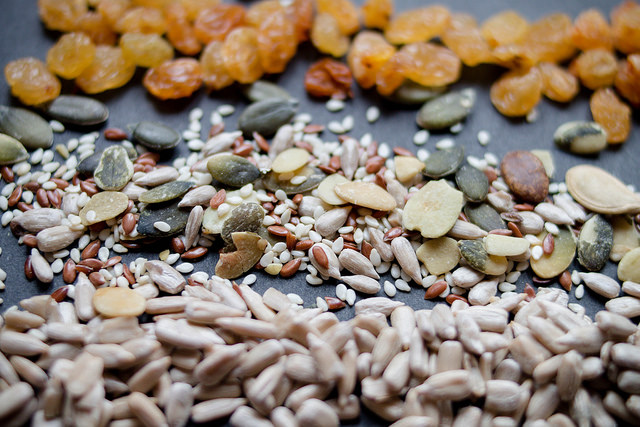Plagued with achy joints? Your remedy may be found on your plate!
New research published in the Annals of the Rheumatic Diseases Journal discovered that those who eat a high-fiber diet are less likely to experience osteoarthritic knee pain.
The Framingham study spanned over 34 years and included just over 1,200 people with an average age of 54.
>> The group that ate the highest amount of fiber ate an average of 26 grams.
>> The group that ate the lowest amount of fiber ate an average of 14 grams.
The researchers found that the more fiber people ate, the less knee pain they reported—and the less likely they were to be diagnosed with knee arthritis.
In fact, those who ate the most fiber had 61 percent less risk of osteoarthritis knee pain compared to those who ate the least fiber.
No one gets enough fiber.
Interestingly, the group that ate the highest amount of fiber was still under the recommended daily allowance for dietary fiber.
Fiber supports healthy cholesterol, feeds our microbiome, stabilizes blood sugar levels, escorts toxic bile to the toilet, and keeps the bowels running smoothly.
It safeguards your colon, liver, and gallbladder. It supports the growth of beneficial gut bacteria—and as the study mentioned above showed, it can also reduce knee pain from arthritis!
It may not surprise you that Americans only eat about half the fiber they should in order to harvest the health benefits of a high-fiber diet. The average American only gets 10 to 20 grams of dietary fiber per day. According to experts, if you can achieve a fiber intake of 50 grams per day (or more), you will experience a healthy difference.
>> Learn more about the importance fiber intake here.
Ayurveda’s take on joint ailments.
Thousands of years ago, Ayurveda made the connection between joint health and colon health, in that many joint ailments actually originate in the colon. Toxins and undigested food can irritate and compromise the integrity of the intestinal wall. These irritants can lead to lymph and liver congestion, which can lead to an accumulation of toxic irritants in the joints.
A high-fiber diet ensures the health and integrity of the intestinal lining, and it also ensures that the unwanted toxins will attach to the bile (which acts like a toxin-eating Pac-Man) and make it to the toilet.
It is important to be eating fiber at all times of the year to ensure the health of the colon. There are two types of fiber: insoluble and soluble fiber.
Insoluble fiber is often called “roughage,” as it generally does not break down in the digestive tract. It is found in fresh fruits, veggies, tubers, and legumes.
Soluble fibers are the vegetable fibers that break down and become slimy and soft during the digestive process. Soluble fiber is found in grains, legumes, chia and flax seeds, okra, oatmeal, and any food that is easily broken down during digestion. Many foods have a little of both types of fiber, but there is a seasonal emphasis that we should follow.
In the spring and summer, there is an abundance of insoluble fiber with the harvest of leafy greens and fibrous fruits, veggies, and tubers. In the fall and winter, there is a shift to a harvest of soluble fibers with more grains, beans, and seeds that are readily available.
>> Learn more about getting the right fiber in the right season here.
Where has all the fiber gone?
According to a new study out of John Hopkins University, massive amounts of fiber are thrown away every day.
Instead of eating the fiber-rich foods on our plates, we are throwing our uneaten food fiber into landfills. The amount of fiber we throw away annually, if eaten, would provide the amount of fiber we would need to meet our daily fiber requirements.
For example, food wasted each day in 2012 contained about 1.8 billion grams of dietary fiber. That same year, American women under-consumed dietary fiber by 8.9 grams per day.
The daily amount of wasted dietary fiber was equivalent to the amount needed to fill this shortfall for as many as 206.6 million adult women, according to the study.
To help remedy this problem, the U.S. Department of Agriculture and the Environmental Protection Agency have a goal of reducing food waste by 50 percent by 2030.
~
Relephant:
The Secret Nutrient to Getting Lean & Healthy.
High fiber, low carbohydrate diet dramatically lowers inflammatory disease risk.
~
Author: Dr. John Douillard
Image: Flickr/Marco Verch
Editor: Yoli Ramazzina
Copy editor: Travis May
Social editor: Waylon Lewis











Read 2 comments and reply